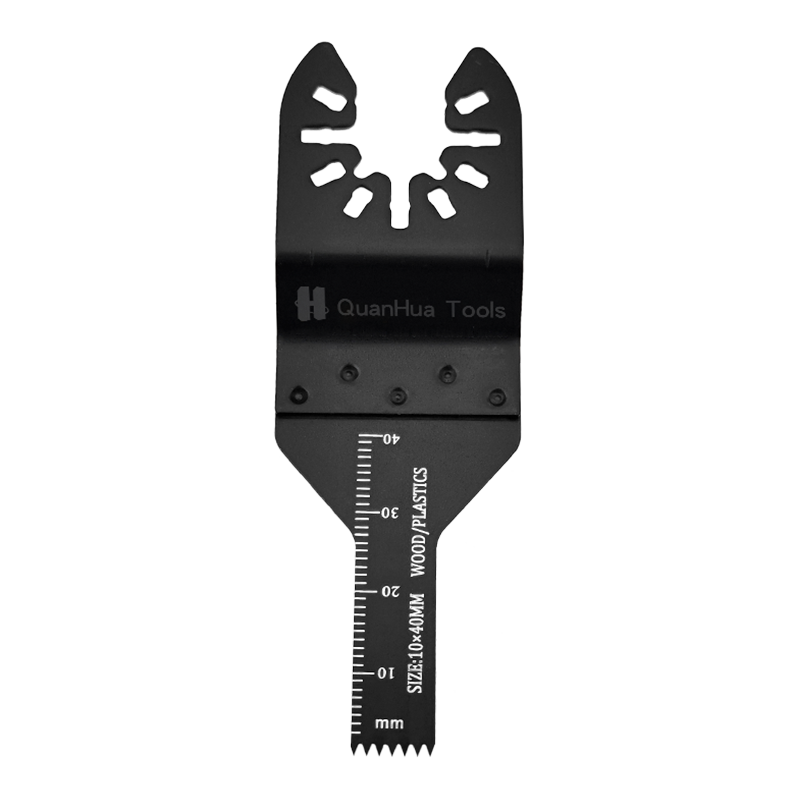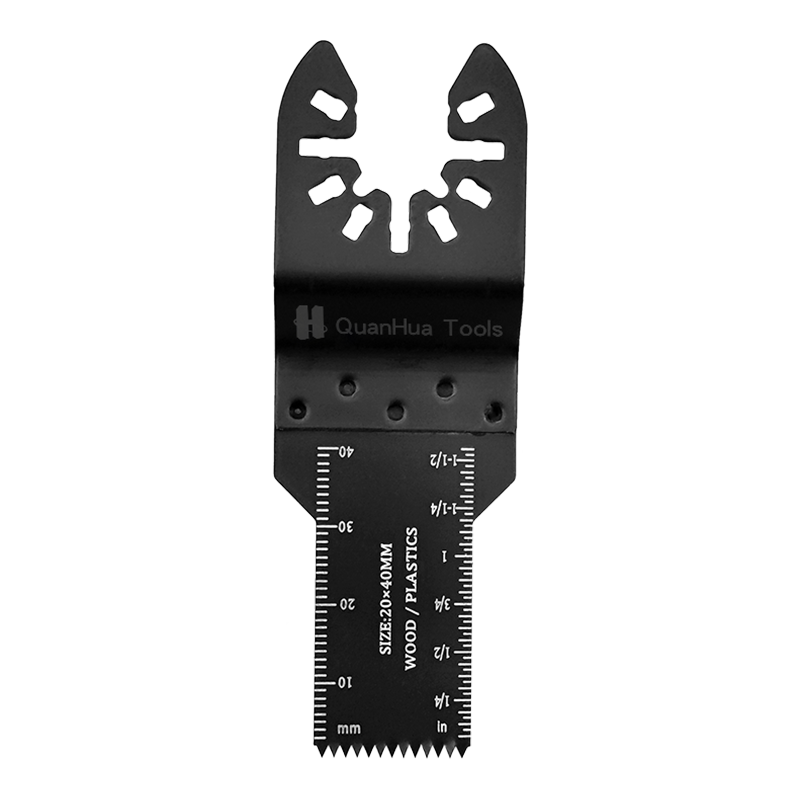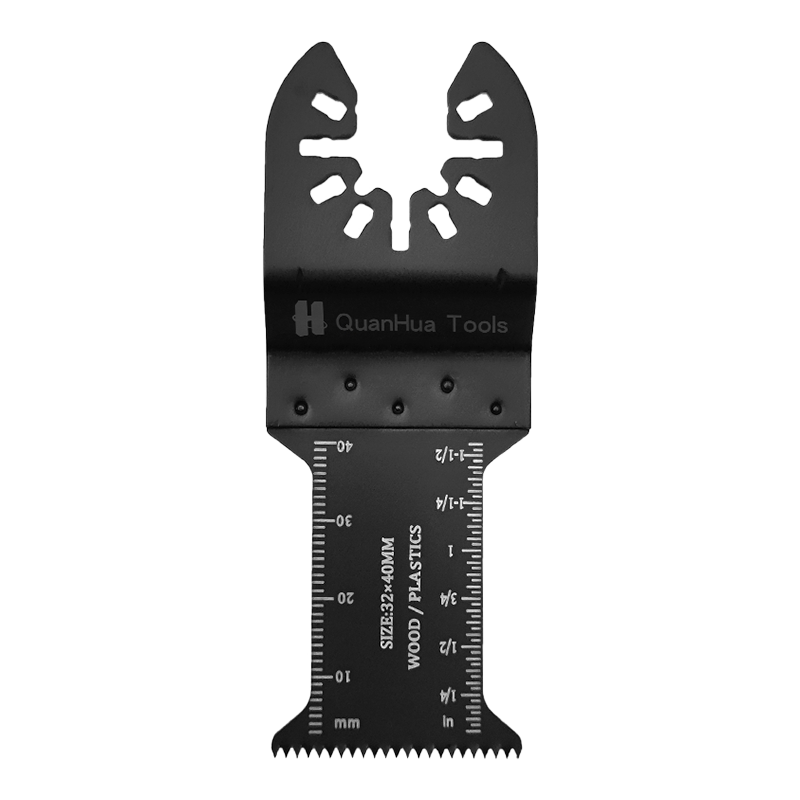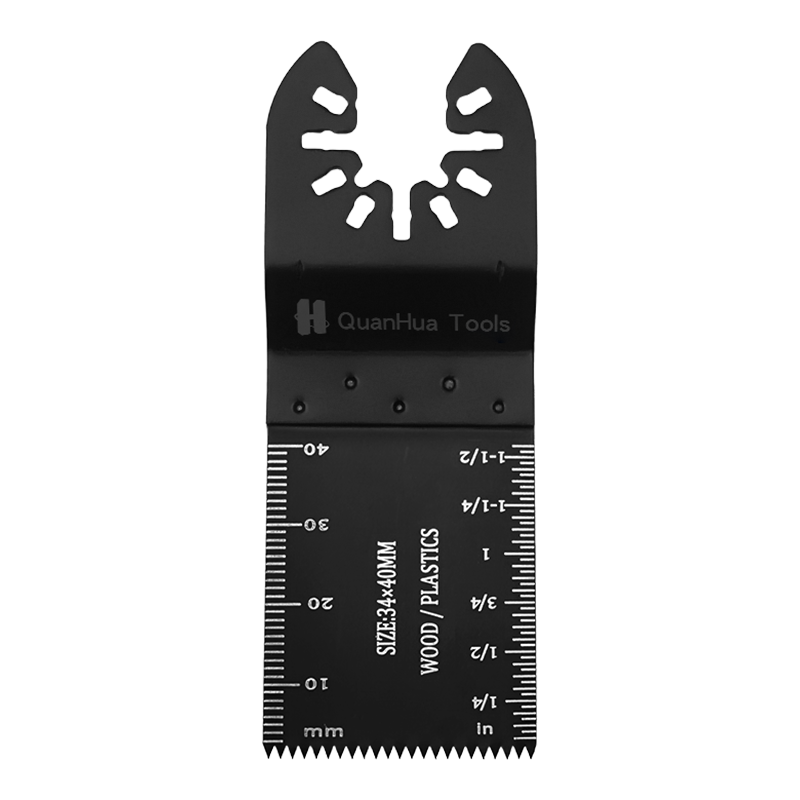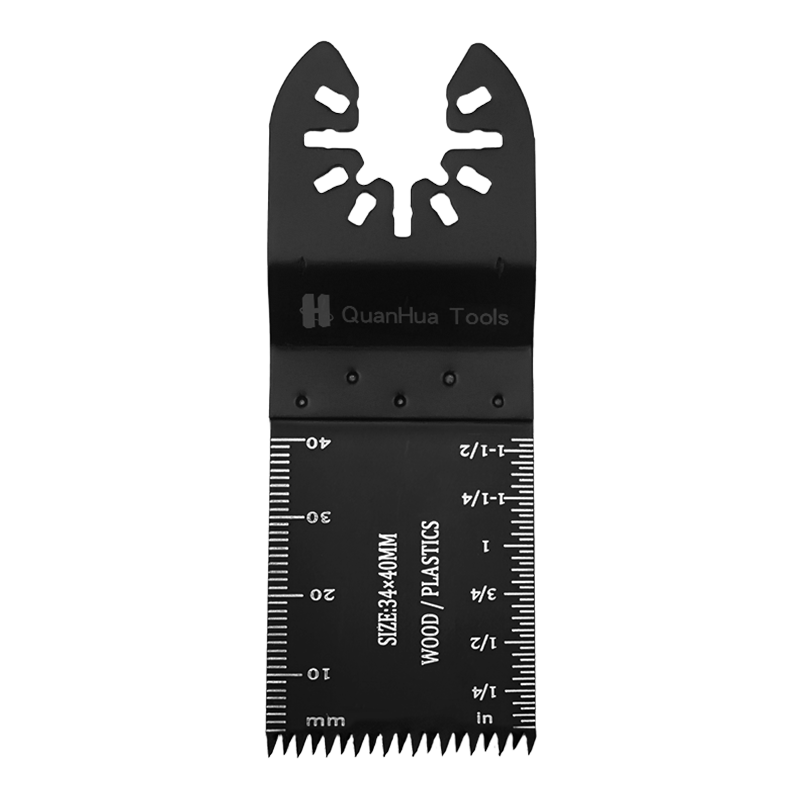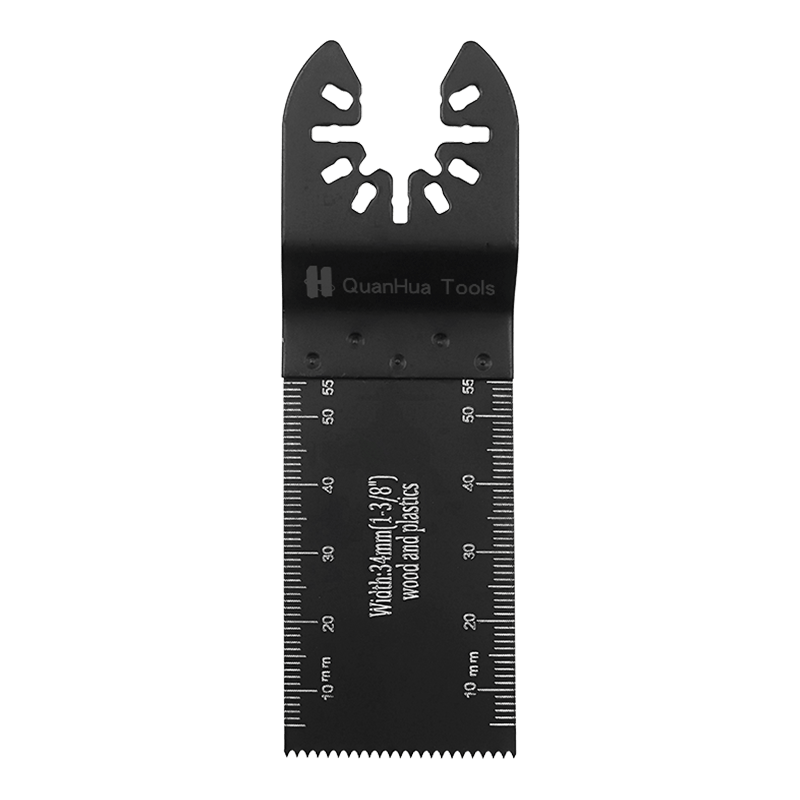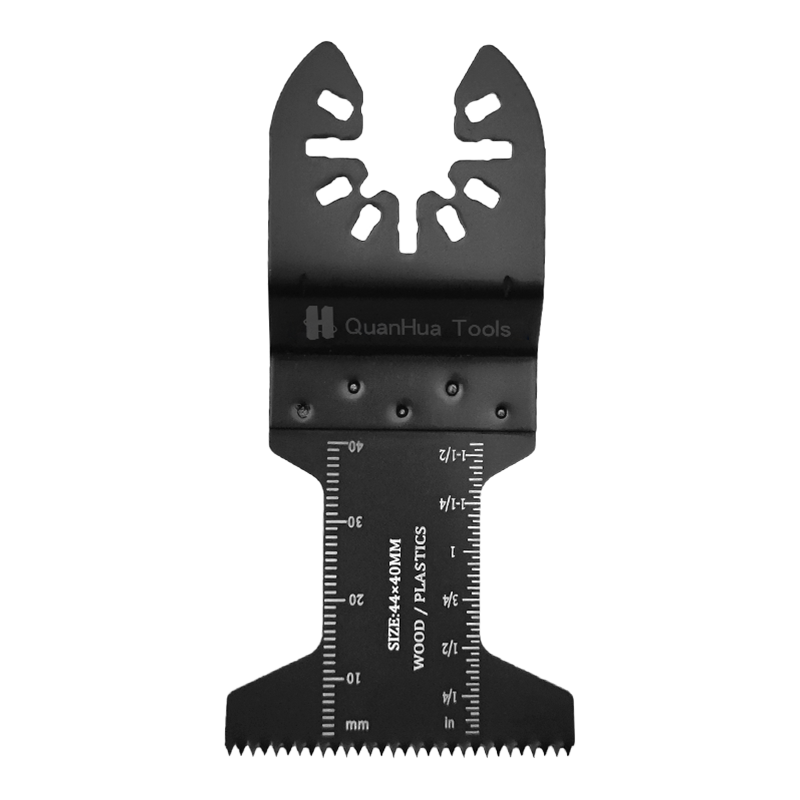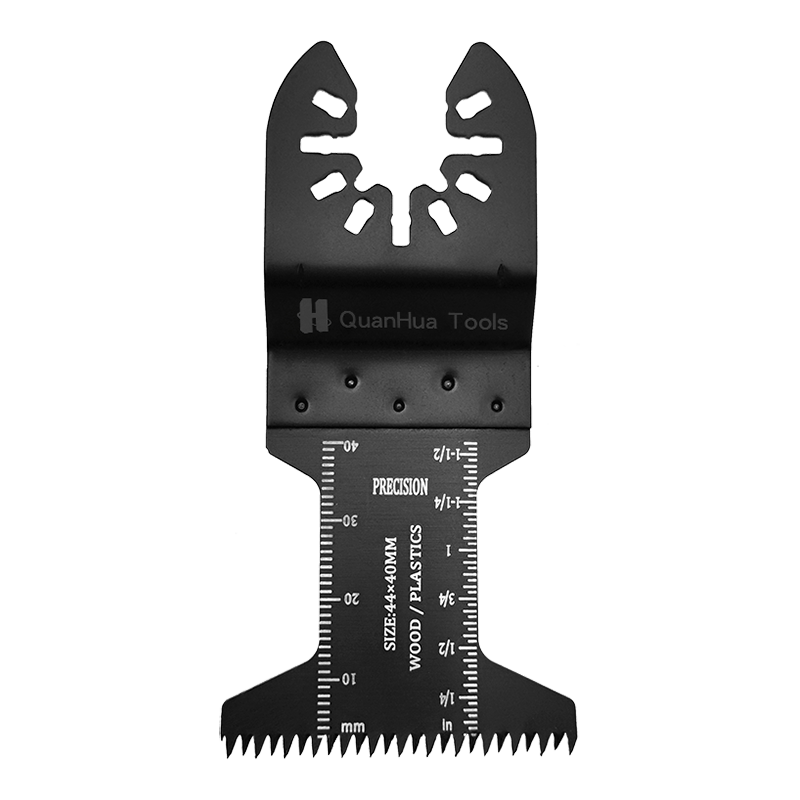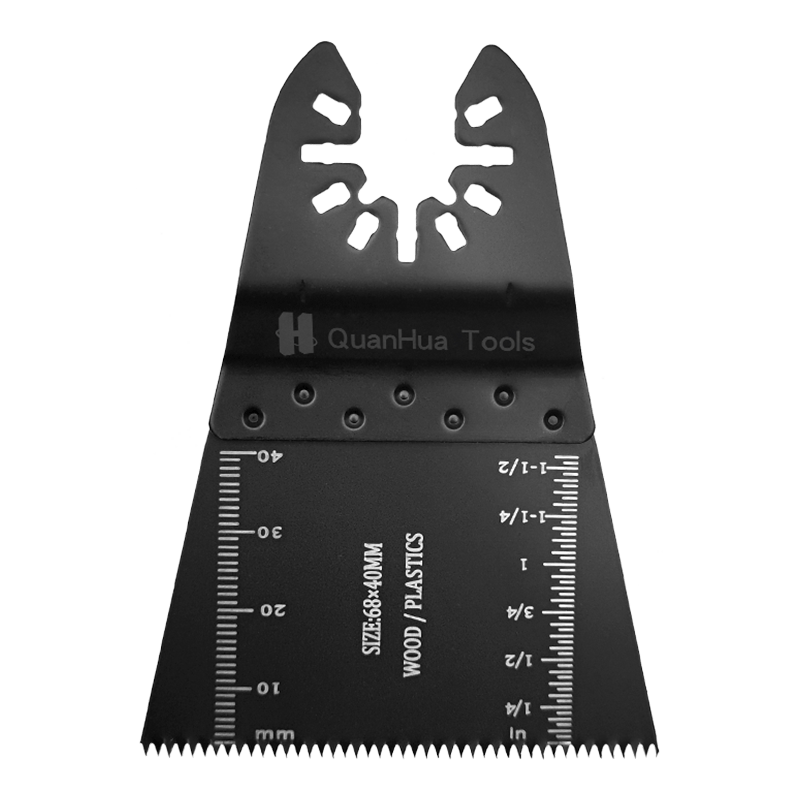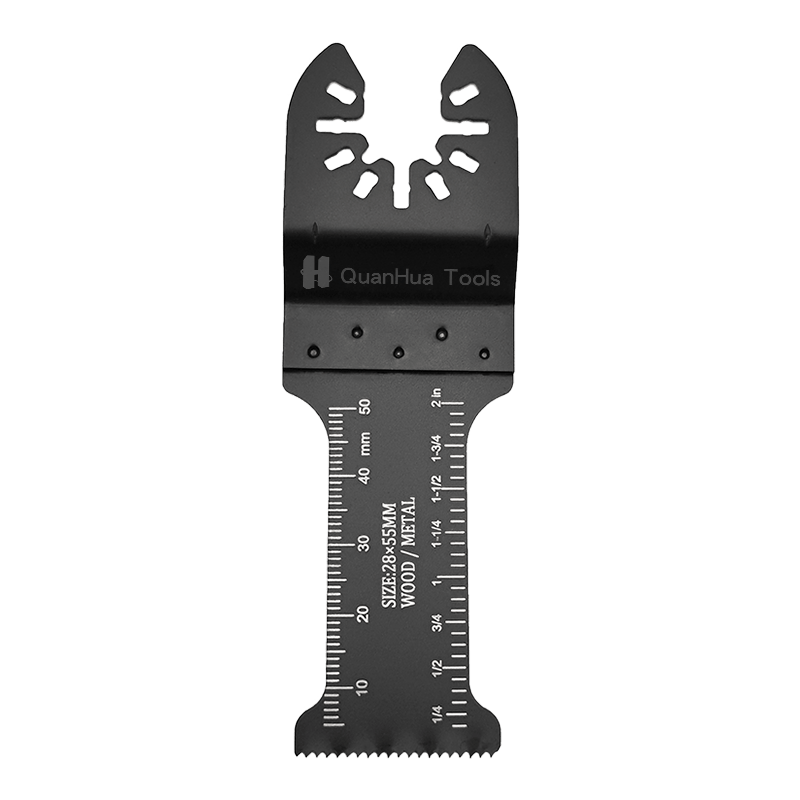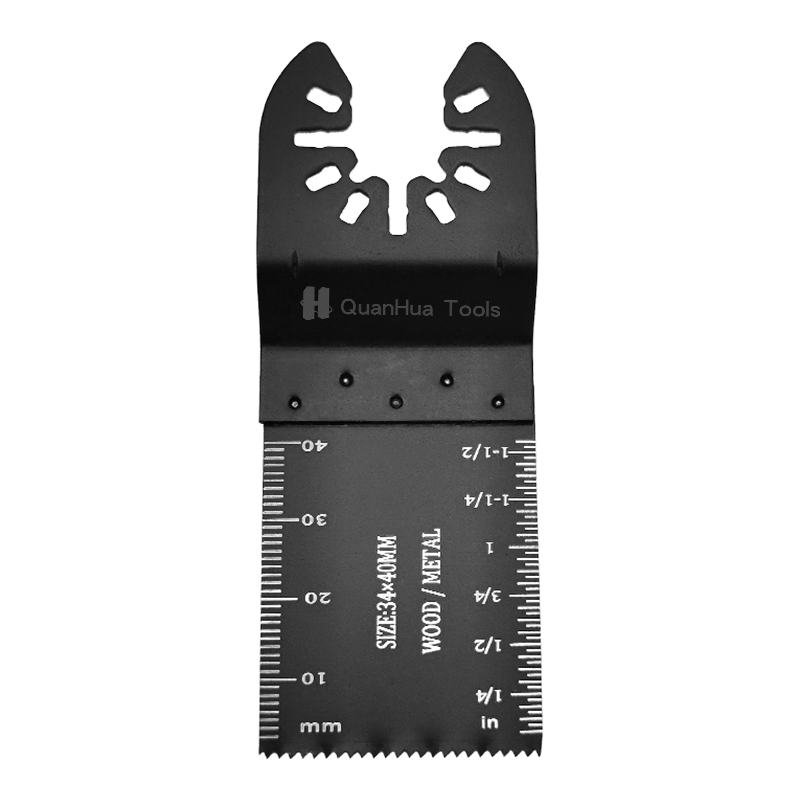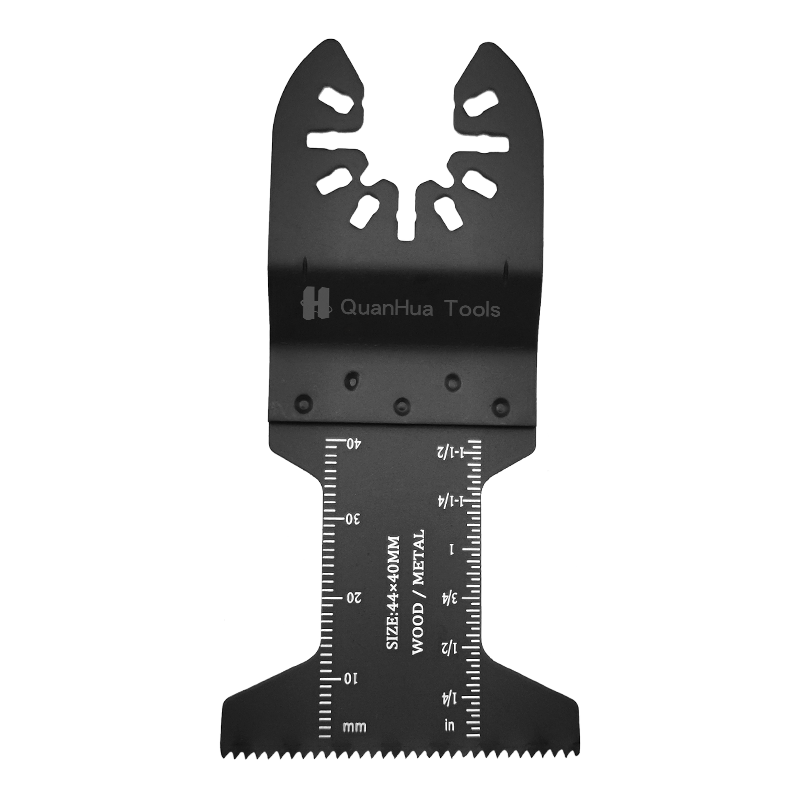In many woodworking, DIY, and construction tasks, choosing the right saw blade is crucial to ensuring both work efficiency and quality. Among oscillating tools, the Carbide Oscillating Multitool Sabre Saw Blade is becoming the preferred choice for many professionals and DIY enthusiasts. Compared to the standard steel saw blade, carbide blades have clear advantages in various aspects.
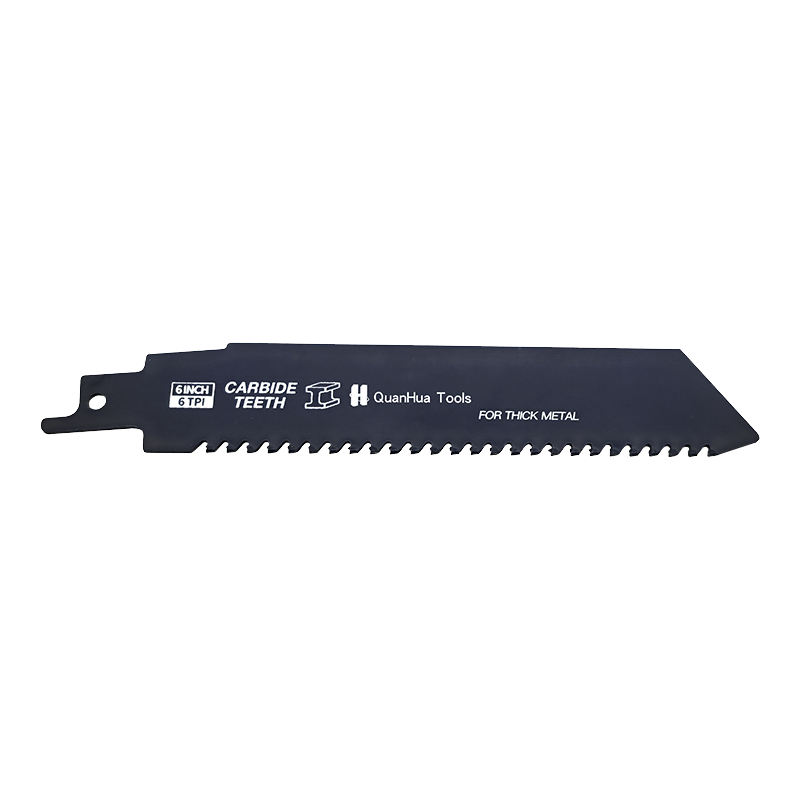
Material Differences
Characteristics of Carbide Oscillating Sabre Saw Blade Material
Carbide Oscillating Sabre Saw Blades are typically made from carbide (a metal matrix that contains tungsten). Carbide is extremely hard and wear-resistant, making it ideal for cutting tough materials. With a hardness second only to diamond, carbide blades are highly durable and able to maintain sharpness for longer periods, making them suitable for demanding tasks. The main features of carbide blades include:
- Extreme Hardness: They can easily cut through hard metals, stone, and hardwood.
- High-Temperature Resistance: Carbide blades can withstand high temperatures, making them perfect for prolonged cutting at high speeds.
- Wear Resistance: Unlike other blades, carbide blades wear much more slowly, offering a significantly longer lifespan.
Characteristics of Standard Steel Saw Blade Material
Standard steel saw blades are typically made from high-speed steel (HSS) or other common types of steel. While steel is a relatively strong material, it is not as hard or wear-resistant as carbide. Standard steel blades perform well when cutting softer materials, such as wood and plastic, but tend to lose their sharpness more quickly when cutting tougher materials. The main features of standard steel saw blades are:
- Suitable for Softer Materials: They work well for cutting wood, plastic, and some light metals.
- Lower Cost: Steel blades are cheaper to produce and buy than carbide blades, making them a more economical choice for occasional use.
- Shorter Lifespan: Steel blades wear out faster when cutting hard materials and often need to be replaced more frequently.
Cutting Performance Comparison
Cutting Performance of Carbide Oscillating Sabre Saw Blade
One of the biggest advantages of Carbide Oscillating Sabre Saw Blades is their outstanding cutting performance. Due to their hardness, carbide blades can handle even the toughest materials like metals, stone, and hardwood with ease. Whether cutting through stainless steel, tiles, concrete, or thick wood, carbide blades perform exceptionally well.
Key advantages of carbide blades include:
- Faster Cutting Speed: Carbide blades can cut more efficiently through hard materials, reducing overall cutting time.
- Precision: Carbide blades maintain cutting precision, which is particularly beneficial for tasks like fine woodworking and intricate construction work.
- Versatility: They work well on a variety of materials, from metal to wood and concrete.
Cutting Performance of Standard Steel Saw Blade
Standard steel saw blades, on the other hand, are designed for cutting softer materials. They are efficient when it comes to cutting wood, plastics, and aluminum but struggle when dealing with tougher materials like hard metals or concrete. When cutting harder materials, steel blades require more time, effort, and frequent blade replacements, and the cutting result may not be as clean or precise.
The drawbacks of steel blades include:
- Slower Cutting Speed: Steel blades take longer to cut through tough materials, reducing efficiency.
- Lower Precision: The cutting quality may be rougher compared to carbide blades, especially on harder materials.
- Increased Effort: More force is needed to cut harder materials, which may affect both user experience and overall productivity.
Durability and Lifespan Comparison
Durability of Carbide Oscillating Sabre Saw Blade
Due to the inherent properties of carbide, Carbide Oscillating Sabre Saw Blades offer remarkable durability. The hardness and wear resistance of carbide allow these blades to withstand prolonged use, even in demanding environments. Carbide blades maintain sharpness over a much longer period compared to standard steel blades, reducing the frequency of replacements and making them more cost-effective in the long run.
Key benefits of carbide blades include:
- Longer Lifespan: Carbide blades stay sharp and functional even after extended use on hard materials like metal and stone.
- Resistant to Heat: Carbide blades can handle high-temperature environments, such as during prolonged cutting tasks, without degrading.
- Lower Maintenance Costs: The longer lifespan of carbide blades reduces the frequency of replacements, saving users on maintenance costs.
Durability of Standard Steel Saw Blade
In contrast, standard steel blades tend to wear out quickly, especially when cutting harder materials. While they may work fine for occasional use or soft materials, their durability is significantly lower than carbide blades. The cutting edge of a steel blade wears down faster, and after prolonged use, the blade becomes dull, requiring more frequent replacements.
Drawbacks of steel blades include:
- High Wear Rate: Steel blades dull quickly when cutting hard materials, especially metals and concrete.
- Shorter Lifespan: Steel blades need to be replaced more often, especially when used for extended periods or on demanding tasks.
- Increased Costs Over Time: Frequent blade replacement increases the long-term cost of using steel blades.
Material Compatibility Comparison
Carbide Oscillating Sabre Saw Blade Material Compatibility
Carbide Oscillating Sabre Saw Blades are highly versatile and can handle a wide range of materials, making them ideal for professionals and multi-purpose applications. These blades excel at cutting through materials like metal, stone, tiles, and hardwood. They are especially effective in tasks that require precision and durability.
Typical materials compatible with carbide blades:
- Hard Metals: Steel, stainless steel, iron, etc.
- Stone & Tile: Carbide blades can easily cut through tough stone and ceramic tiles.
- Hardwood & Plastic: Carbide blades are also effective on harder woods and various types of plastic.
- Concrete: Carbide blades perform well in cutting through tough building materials such as concrete.
Standard Steel Saw Blade Material Compatibility
Standard steel saw blades are best suited for softer materials and are not as versatile as carbide blades. While they can handle light metal cutting, they are far less effective on harder materials. Steel blades are ideal for tasks that involve wood and soft metals but should be avoided for hard materials.
Typical materials compatible with steel blades:
- Wood: Steel blades are perfect for cutting through wood, plywood, and soft timber.
- Plastic: They perform well on plastic materials.
- Soft Metals: Steel blades are suitable for light metals like aluminum and copper.
- Limited Use on Hard Metals: Steel blades struggle with cutting hard metals or other tough materials.
Price Comparison
Price of Carbide Oscillating Sabre Saw Blade
Due to the high cost of carbide materials, Carbide Oscillating Sabre Saw Blades tend to be more expensive than their steel counterparts. However, considering their longer lifespan, greater cutting performance, and reduced frequency of replacement, carbide blades are more cost-effective in the long run. For professionals or those who frequently cut through tough materials, the higher upfront cost is worth the investment.
Price of Standard Steel Saw Blade
In contrast, Standard Steel Saw Blades are much more affordable and accessible. For users on a budget or those who only occasionally engage in light cutting tasks, a steel blade can be a reasonable choice. However, due to their shorter lifespan and more frequent need for replacement, the long-term cost of using steel blades can add up.
Comparison Table: Carbide Oscillating Sabre Saw Blade vs Standard Steel Saw Blade
| Feature | Carbide Oscillating Sabre Saw Blade | Standard Steel Saw Blade |
|---|---|---|
| Material | Carbide (Tungsten) | High-Speed Steel (HSS) |
| Compatible Materials | Hard metals, stone, tile, hardwood, concrete | Wood, plastic, soft metals |
| Durability | Highly wear-resistant, longer lifespan | Wears down quickly, shorter lifespan |
| Cutting Speed | Faster, efficient on hard materials | Slower, suitable for softer materials |
| Usage Environment | High-intensity, prolonged use | Light, occasional use |
| Price | Higher, but more cost-effective long-term | Lower, more economical for short-term use |

